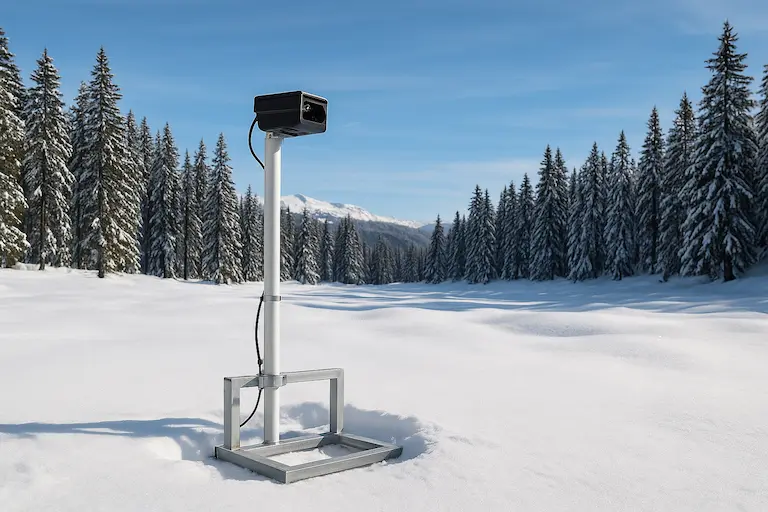Case Study: Snow Depth Monitoring System Using Meskernel Laser Sensors
In recent years, the advancement of environmental monitoring technologies has significantly enhanced our ability to track and analyze climatic conditions with precision. One particular innovation gaining momentum is laser snow depth monitoring. This method offers an accurate, non-invasive means to measure snow accumulation, crucial for applications like hydrology, weather forecasting, and avalanche risk assessment. This case study explores how Meskernel laser sensors have been employed effectively in a snow depth monitoring system, delivering reliable data under challenging environmental conditions.
The Importance of Accurate Snow Depth Data
Snow depth is a vital metric influencing water resource management, winter tourism, transportation safety, and natural hazard prediction. Traditional methods of measuring snow depth—such as manual probes or ultrasonic sensors—are often labor-intensive, less precise, and susceptible to errors caused by drifting snow or ice.
In contrast, laser-based sensors emit focused light pulses that reflect off the snow surface, allowing for precise measurement of the distance between the sensor and the snowpack. This technology is especially valuable in remote or difficult-to-access locations where automatic and reliable data collection is essential.
Why Choose Meskernel Laser Sensors for Snow Depth Monitoring?
Meskernel laser sensors stand out within the realm of laser snow depth monitoring due to their robust engineering, long-range detection capabilities, and ability to operate in severe weather conditions.
-
High Precision and Resolution: Meskernel sensors provide millimeter-level accuracy. This precision facilitates detailed tracking of snowpack variations, essential for understanding snowmelt dynamics and water equivalent estimations.
-
Durability in Harsh Environments: Built with IP67-rated housings and advanced temperature compensation, these sensors can withstand freezing temperatures, moisture, and blowing snow without compromising performance.
-
Low Power Consumption: Ideal for remote installations powered by solar or battery systems, Meskernel sensors maximize energy efficiency while maintaining continuous operation.
-
Ease of Integration: Their compatibility with common data loggers and telemetry systems allows seamless inclusion in weather stations or hydrological networks.
System Design and Deployment
The snow depth monitoring system was developed by integrating Meskernel laser sensors at strategic points across a mountainous region prone to heavy snowfall. Each sensor was mounted on stable platforms overlooking open ground free from obstacles that might interfere with laser measurements.
-
Sensor Placement: Elevation and spacing were carefully chosen using terrain analysis to provide a representative overview of local snow distribution.
-
Data Collection and Transmission: Continuous measurements were logged at 15-minute intervals. Data was transmitted wirelessly to a central hub where it was processed and stored for analysis.
-
Power Management: Solar panels supplemented by battery banks ensured uninterrupted sensor operation throughout winter.
Performance and Results
Over a complete winter season, the system demonstrated exceptional reliability and accuracy, confirming the advantages of laser snow depth monitoring with Meskernel technology.
-
Consistent Accuracy: Comparative validation against traditional manual snow probes showed deviations below 2 cm, well within acceptable margins for scientific research and operational use.
-
Real-Time Monitoring: The system enabled near-real-time snow depth tracking, allowing early detection of rapid snowpack changes and aiding local authorities in avalanche risk assessment.
-
Reduced Maintenance: Unlike ultrasonic or mechanical measurement devices that often require frequent manual intervention, the laser sensors required minimal maintenance, even during extreme weather events.
Challenges and Solutions
Implementing any high-precision sensing system in mountainous, snowy environments comes with challenges, most notably:
-
Snow Accumulation on Sensors: Ice and snow buildup on sensor housings could distort readings. Meskernel’s heating elements and hydrophobic coatings helped mitigate this problem effectively.
-
Variable Terrain Reflectivity: Heterogeneous surface textures could affect laser reflection. Calibration routines and signal processing algorithms were applied to filter out noise and maintain measurement integrity.
Future Applications and Enhancements
The success of this snow depth monitoring system opens doors for expanding laser snow depth monitoring technology into broader climate monitoring networks. Potential future enhancements include:
-
Integration with Weather Forecasting Models: Using high-frequency snow depth data to improve predictive algorithms for snowmelt and runoff.
-
Avalanche Control Systems: Providing rapid snowpack condition updates for avalanche control teams to execute timely preventative measures.
-
Smart Infrastructure Management: Monitoring snow accumulation around critical infrastructure like roads and power lines to inform snow removal and maintenance efforts.
Conclusion
Employing Meskernel laser sensors for laser snow depth monitoring has proven to be a game-changer in environmental data acquisition. This case study highlights how the combination of cutting-edge sensor technology with thoughtful system design can overcome traditional challenges in snow measurement. As climate variability grows, the importance of accurate, real-time snow depth data will only increase, positioning laser sensors like those from Meskernel at the forefront of environmental monitoring innovation.




